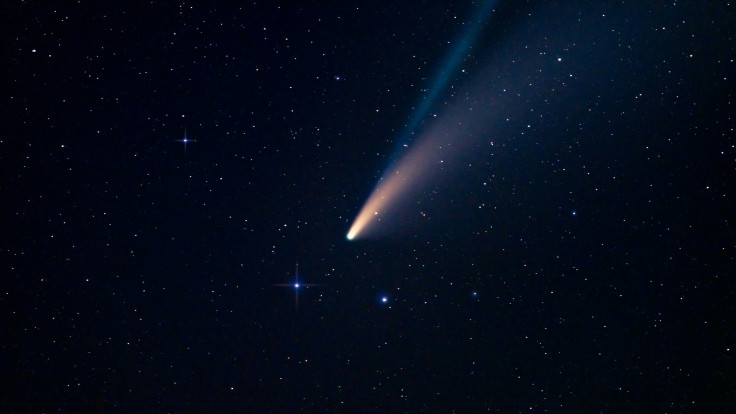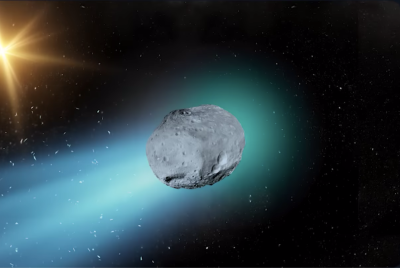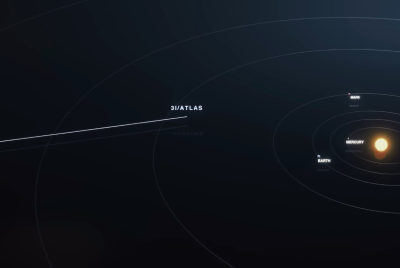Harvard's Avi Loeb Claims 3I/ATLAS Could Be A 'Nuclear-Powered Spacecraft'
Avi Loeb sparks claims 3I/ATLAS may be a nuclear-powered alien craft.

Avi Loeb, the Harvard astrophysicist known for provocative hypotheses about extraterrestrial artefacts, has renewed arguments that the interstellar visitor 3I/ATLAS could be an engineered object rather than a conventional comet. His latest suggestion that the body might resemble a nuclear-powered spacecraft has revived intense debate across scientific and public forums as high‑resolution data are about to be released.
The claim comes amid a wave of social media speculation and fresh observations that show unusual behaviour from the object after its passage near the Sun. Mainstream astronomers caution that natural explanations remain credible, but Loeb's persistence has ensured the story stays at the centre of public attention and scientific scrutiny.
3I/ATLAS and the Evidence Under Review
🚨 Something About 3I/ATLAS Doesn’t Make Sense — And Scientists Are Stunned 🚨
— Astronomy Vibes (@AstronomyVibes) November 14, 2025
Dr. Avi Loeb says the radio signal linked to 3I/ATLAS came from a frequency tied to certain molecules — but the real mystery is whether anything in that signal cannot be explained by nature. He urged… pic.twitter.com/qCStoIteet
3I/ATLAS was first detected in July 2025 by the ATLAS survey, and early follow‑up work established it as only the third confirmed interstellar object observed passing through the Solar System.
Initial imaging from facilities, including Hubble, showed active outgassing and a dust cocoon around the nucleus, features consistent with cometary behaviour. Subsequent radio measurements revealed signatures associated with hydroxyl radicals, which astronomers say are a classic marker of water vapour released by warming ices.
Proponents of the engineered‑object hypothesis point to several anomalies. Observers have reported an anti‑tail structure, jets that appear to point sunward under some viewing geometries, and non‑gravitational accelerations that might, at first glance, exceed expectations for simple outgassing.
Loeb and a few colleagues interpret those irregularities as potential evidence of active propulsion or directional mass loss inconsistent with typical comet dynamics. Sceptics emphasise natural mechanisms that can account for the observations. Comets display a wide range of behaviours when heated by the Sun, including asymmetric dust ejection and transient accelerations arising from anisotropic sublimation.
Instrumental limitations and projection effects can exaggerate apparent oddities when a distant, fast‑moving body is monitored from varying perspectives. Those cautious voices have been bolstered by planned releases of sharper imagery from orbital assets, which specialists expect will resolve much of the uncertainty surrounding nucleus size, structure and the morphology of the dust environment.
High‑Resolution Images and the Test Posed by Solar Interaction

NASA has announced that the highest‑resolution images yet captured of 3I/ATLAS, taken by the HiRISE camera aboard the Mars Reconnaissance Orbiter, will be made public after a delay caused by an earlier government shutdown. Those frames should offer significantly greater spatial detail than prior Hubble exposures and permit tighter constraints on the object's nucleus and immediate surroundings.
The images arrive at a crucial moment: a coronal mass ejection and the object's post‑perihelion behaviour have provided a natural experiment to observe how the body responds to extreme solar forcing.
If 3I/ATLAS were an engineered spacecraft with some form of propulsion, the response to solar plasma and the detailed structure of any jets would likely differ from that expected of native cometary materials.
Conversely, if the new imagery and multispectral data confirm intact nucleus morphology, conventional volatile‑driven models will gain explanatory strength. Observatories and radio telescopes currently monitoring the visitor will combine datasets to test competing models, from anisotropic outgassing to more exotic scenarios.
Broader Implications and the Path Forward
🚨 BREAKING: “If it’s technological… yes, we’re screwed.” — Avi Loeb on FOX 10
— Ezee (@EzeemmaCraic) November 7, 2025
The Harvard astrophysicist just confirmed what many feared.
Congresswoman Anna Paulina Luna reportedly met with NASA today — demanding the release of the HiRISE Mars Orbiter images of 3I/ATLAS, the… pic.twitter.com/AvgzQYTpps
The controversy over 3I/ATLAS highlights tensions at the intersection of public curiosity, scientific method and media dynamics. Loeb's approach has been to press alternative hypotheses publicly and insist that extraordinary possibilities merit careful consideration.
That stance has provoked pushback from many colleagues who argue that hypothesis testing must follow stringent evidentiary standards and that premature leaps to techno‑logical explanations risk undermining public trust in science.
Regardless of the final classification of 3I/ATLAS, the episode underscores the value of rapid, transparent data sharing and coordinated international observation campaigns. Upcoming HiRISE images and continuing observations from ground‑based arrays and space missions will be decisive.
If the object behaves like a comet under detailed scrutiny, the alien craft discussion will likely subside; if genuine anomalies persist after exhaustive analysis, a more open debate within the scientific community will be necessary.
As higher‑resolution data are released and the scientific community applies rigorous tests to competing explanations, the coming weeks should clarify whether extraordinary claims are warranted or whether natural cometary physics suffice to explain the observed phenomena.
© Copyright IBTimes 2025. All rights reserved.





















